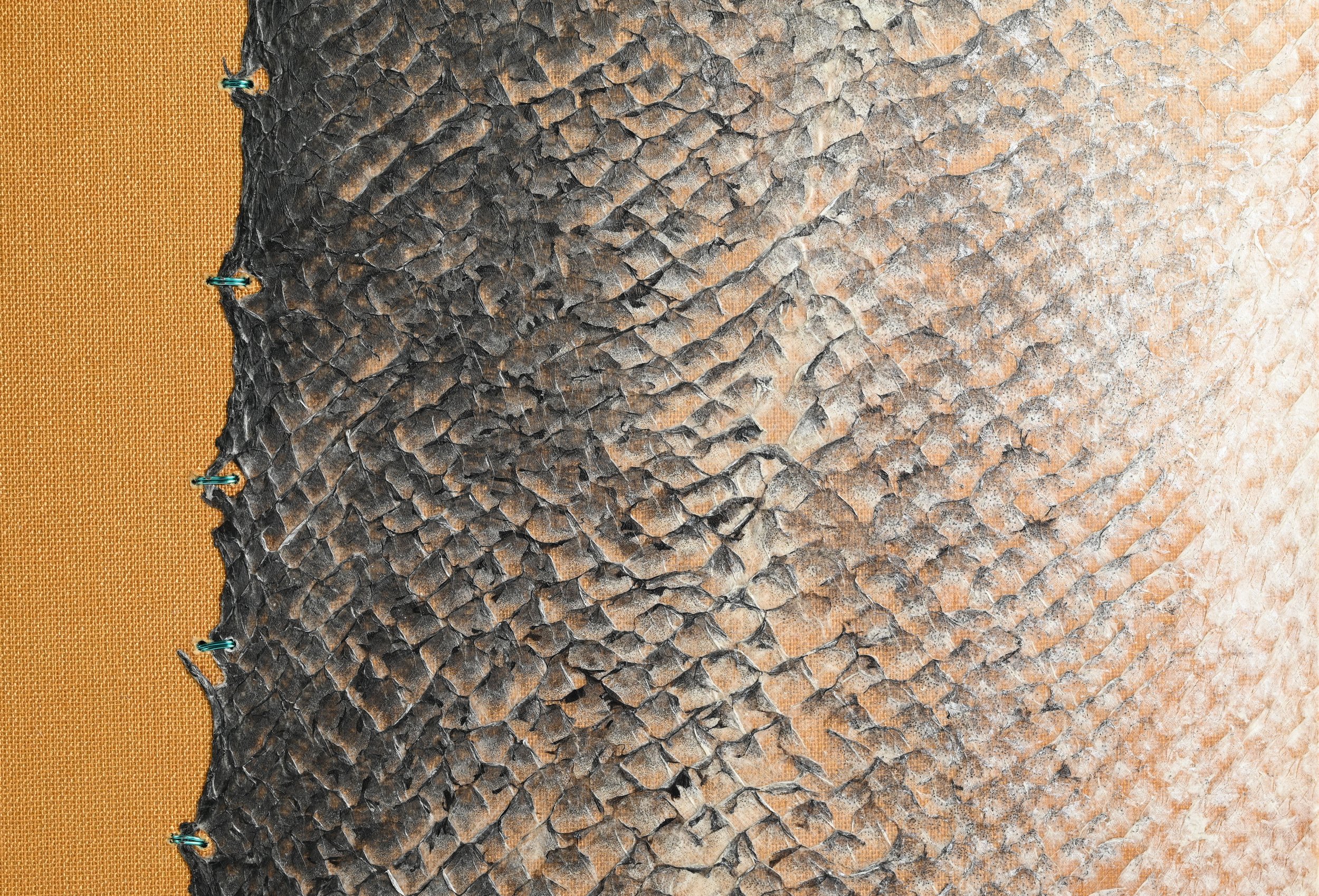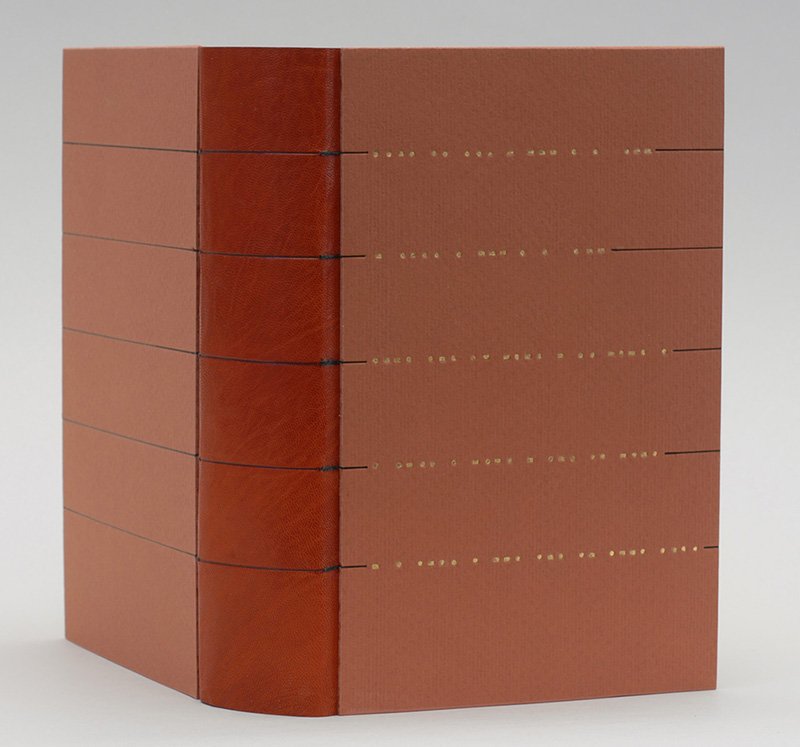 Image 1 of 4
Image 1 of 4

 Image 2 of 4
Image 2 of 4

 Image 3 of 4
Image 3 of 4

 Image 4 of 4
Image 4 of 4





The Art of the Book
The Art of the Book: A review of some recent European and American work in typography, page decoration & binding edited by Charles Holme. London, Paris, New York: "The Studio" Ltd. , 1914
New Oriental Binding in full paper: pigment inkjet printing on Griffen Mill Akbar. Sewn on Tyvek stubs. Bound 2019.
11 13/16 X 8 7/8 x 1 5/16”
Douglas Cockerell essay on the nature of fine binding from the text printed onto boards and endpapers.
Excerpt from the essay:
Fine or “extra” binding as it is called in the trade implies that the craftsman has done his best with the best materials. It may be plain or decorated, but whatever work there is should be the best of which the craftsman is capable. There are some qualities that are common to all well-bound books. Of course abnormal books have to be treated specially, but it may generally be said that every leaf of a book should open right to the back. The sections should be sewn to flexible cords or tapes, the ends of these should be firmly attached to the boards, and the back should be covered with some flexible material, such as leather, which, while protecting the sewing-thread or cord, shall itself add to the strength of the binding. A fine binding will have many other features added by way of refinement or elaboration, but unless it has these qualities it is likely to be an unsatisfactory piece of work…
Fine binding is an expensive luxury but not an unreasonable one compared with many others. We have now in England a school of really fine binding, and the most reasonable and unobjectionable form that luxury can take is the use of beautiful things in everyday life. If a book is well bound and well decorated it is fit to use, and in choosing a book to be expensively bound it would be better to choose the book most often used than one which would be put away unopened. Most fine bindings would be greatly improved by use, and the reasonable using of them would give immense pleasure, a pleasure that would justify the binder’s care and trouble and the purchaser’s outlay. The use of a beautiful thing gives a far higher form of pleasure than does the mere sense of ownership.
The Art of the Book: A review of some recent European and American work in typography, page decoration & binding edited by Charles Holme. London, Paris, New York: "The Studio" Ltd. , 1914
New Oriental Binding in full paper: pigment inkjet printing on Griffen Mill Akbar. Sewn on Tyvek stubs. Bound 2019.
11 13/16 X 8 7/8 x 1 5/16”
Douglas Cockerell essay on the nature of fine binding from the text printed onto boards and endpapers.
Excerpt from the essay:
Fine or “extra” binding as it is called in the trade implies that the craftsman has done his best with the best materials. It may be plain or decorated, but whatever work there is should be the best of which the craftsman is capable. There are some qualities that are common to all well-bound books. Of course abnormal books have to be treated specially, but it may generally be said that every leaf of a book should open right to the back. The sections should be sewn to flexible cords or tapes, the ends of these should be firmly attached to the boards, and the back should be covered with some flexible material, such as leather, which, while protecting the sewing-thread or cord, shall itself add to the strength of the binding. A fine binding will have many other features added by way of refinement or elaboration, but unless it has these qualities it is likely to be an unsatisfactory piece of work…
Fine binding is an expensive luxury but not an unreasonable one compared with many others. We have now in England a school of really fine binding, and the most reasonable and unobjectionable form that luxury can take is the use of beautiful things in everyday life. If a book is well bound and well decorated it is fit to use, and in choosing a book to be expensively bound it would be better to choose the book most often used than one which would be put away unopened. Most fine bindings would be greatly improved by use, and the reasonable using of them would give immense pleasure, a pleasure that would justify the binder’s care and trouble and the purchaser’s outlay. The use of a beautiful thing gives a far higher form of pleasure than does the mere sense of ownership.

























